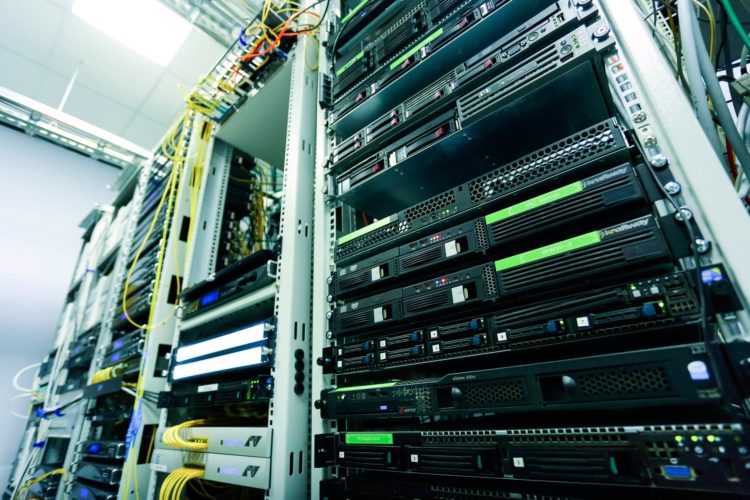The onset of COVID-19 has driven a boom in data centre demand across Hong Kong as large numbers of employees shifted to new patterns of work and fast-forwarded many nascent digital business practices and patterns of consumption.
This has resulted in data centre operators reporting a 20-30 per cent boost in Internet traffic in Hong Kong and the region on average. In turn, this has set off a chain of data centre deployments and a move to increase capacity utilisation of existing assets. The total gross floor area of data centres in Hong Kong is set to increase by 30% by 2025 according to Cushman and Wakefield, a real estate services firm.
Capacity utilisation can be increased by packing more server racks into existing centres but ultimately these will encounter headroom limits in air-cooled facilities. That is opening the door for newer and more efficient technologies, such as liquid cooling.
Up until now, the market simply has not had an appetite for making the changes required to bring the liquid to the rack. But the combination of COVID-19 and the entry of high-performance computing (HPC) applications are now firmly setting the agenda.
In Hong Kong, finance, online gaming, healthcare, film editing, animation, and media streaming are the main industry drivers, generating huge amounts of data and the requirement for an efficient, scalable, and reliable IT infrastructure.
Organisations deploying or utilising HPC applications adopt high-density data centre racks for processing-intensive applications and rack power requirements are exceeding 20 kilowatts (kW) in a growing number of facilities, while some are deploying up to 50 kW or more.
Finding the right cooling temperature
One of the crucial aspects of HPC applications is maintaining the right data centre cooling temperature. Excessive heat can negatively affect the storage devices, servers, and networking hardware.
Maintaining the ideal data centre cooling temperature prevents problems such as downtime in operations, damage to equipment, and increased power costs. When it comes to cooling high-density data centres, there are several types of data centre cooling systems available today.
Chip manufacturers have responded to the growing demand for multi-format HPC applications with more powerful chips. Thermal power densities for leading central processing units (CPUs) and graphics processing units (GPUs) rose sharply in the last two years, after relatively modest growth in the previous five years.
With more of these high-powered CPUs and GPUs being packed into 1U servers and equipment racks being packed with these 1U servers, there are seeing a growing number of applications with racks densities of 30 kW or higher.
Liquid immersion cooling is the best alternative
Now it’s the data centre industry’s turn to respond. To do that, it has to accept the physical limitations of air cooling — it does not have the thermal transfer capacity required to cool high-density racks, no matter how it is optimised.
The best-case scenario is that energy costs rise sharply while CPUs and GPUs throttle back their clock speeds to prevent overheating, compromising the performance of the application. The worst case is equipment failure.
In contrast, the liquid cooling technologies available today have the capacity to efficiently and effectively cool racks of 50 kW and higher. It’s been a long time coming, but liquid cooling is finally positioned to penetrate the Hong Kong and regional data centre ecosystem.
Introducing liquid immersion cooling
Liquid cooling is impacting data centre design on multiple fronts. The first is new data centres being designed to rely exclusively on liquid cooling, creating smaller and more efficient systems with massive compute capabilities.
The second is data centres designed with air cooling, but which also include liquid cooling infrastructure to simplify the future transition.
The third, and by far the most common, is data centre operators integrating liquid immersion cooling into existing air-cooled facilities, often transitioning some of the capacity of air systems to liquid.
Lastly, liquid cooling is emerging as a viable alternative for processing-intensive edge computing sites.
In the case of Hong Kong, the most familiar scenario will involve transforming existing air-cooled facilities into hybrid air- and liquid-cooled facilities.
This is by no means a simple transformation. Available liquid immersion cooling technologies, the liquid-to-heat ratio, plumbing runs, the liquid distribution loop, and final heat rejection all require careful planning and engineering.
A key component of such as system is a Coolant Distribution System (CDU) which provides a complete solution for localised coolant delivery and heat removal. It is ideal for deploying indirect or direct liquid immersion cooling in a hybrid environment – mostly found in the city.
Conclusion
Data centre cooling accounts for one of the biggest consumers of electricity in any data centre operation. Having a highly efficient thermal management solution deployed in a facility can help the organisation save on energy costs without compromising on cooling.
Whether choosing the traditional air-cooled approach or the more innovative liquid cooling technology, there are several options available to help an organisation optimise its high-density data centre for HPC applications or those being stretched to the limit by COVID-19. The key is to evaluate the current infrastructure and understand which technology will work best for them.




